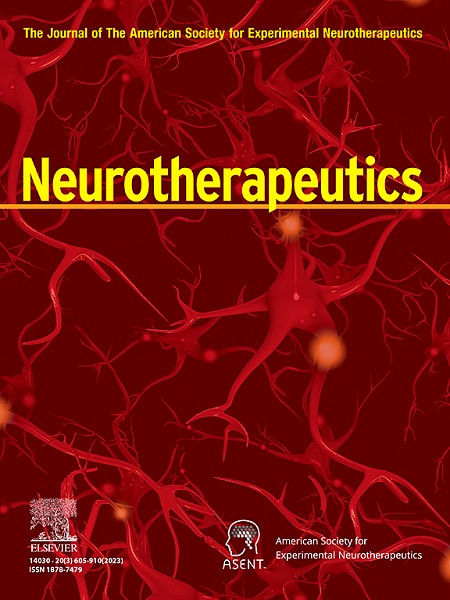动脉瘤性蛛网膜下腔出血的代谢组学和脂质组学途径。
IF 5.6
2区 医学
Q1 CLINICAL NEUROLOGY
引用次数: 0
摘要
动脉瘤性蛛网膜下腔出血(aSAH)导致复杂的全身反应,对晚期并发症的病理生理至关重要,并对预后有重要影响。组学技术扩大了我们对这一现象的研究范围和深度。特别是,代谢组学——对小分子的研究,如血液制品、碳水化合物、氨基酸和脂质——可以提供动态亚细胞过程的快照,从而拓宽我们对导致aSAH后全身反应的分子水平病理变化的理解。脂质尤其重要,因为它们在循环血液中含量丰富,并具有许多生理作用。它们由多种亚种组成,对细胞能量代谢、血脑屏障的完整性、细胞膜的形成以及包括神经炎症和铁凋亡在内的细胞间信号传导至关重要。本文综述了与aSAH相关的代谢组学和脂质组学途径,重点介绍了每个代谢组学域的关键代谢物。本文章由计算机程序翻译,如有差异,请以英文原文为准。
Metabolomic and lipidomic pathways in aneurysmal subarachnoid hemorrhage
Aneurysmal subarachnoid hemorrhage (aSAH) results in a complex systemic response that is critical to the pathophysiology of late complications and has important effects on outcomes. Omics techniques have expanded our investigational scope and depth into this phenomenon. In particular, metabolomics—the study of small molecules, such as blood products, carbohydrates, amino acids, and lipids—can provide a snapshot of dynamic subcellular processes and thus broaden our understanding of molecular-level pathologic changes that lead to the systemic response after aSAH. Lipids are especially important due to their abundance in the circulating blood and numerous physiological roles. They are comprised of a wide variety of subspecies and are critical for cellular energy metabolism, the integrity of the blood-brain barrier, the formation of cell membranes, and intercellular signaling including neuroinflammation and ferroptosis. In this review, metabolomic and lipidomic pathways associated with aSAH are summarized, centering on key metabolites from each metabolomic domain.
求助全文
通过发布文献求助,成功后即可免费获取论文全文。
去求助
来源期刊

Neurotherapeutics
医学-神经科学
CiteScore
11.00
自引率
3.50%
发文量
154
审稿时长
6-12 weeks
期刊介绍:
Neurotherapeutics® is the journal of the American Society for Experimental Neurotherapeutics (ASENT). Each issue provides critical reviews of an important topic relating to the treatment of neurological disorders written by international authorities.
The Journal also publishes original research articles in translational neuroscience including descriptions of cutting edge therapies that cross disciplinary lines and represent important contributions to neurotherapeutics for medical practitioners and other researchers in the field.
Neurotherapeutics ® delivers a multidisciplinary perspective on the frontiers of translational neuroscience, provides perspectives on current research and practice, and covers social and ethical as well as scientific issues.
 求助内容:
求助内容: 应助结果提醒方式:
应助结果提醒方式:


